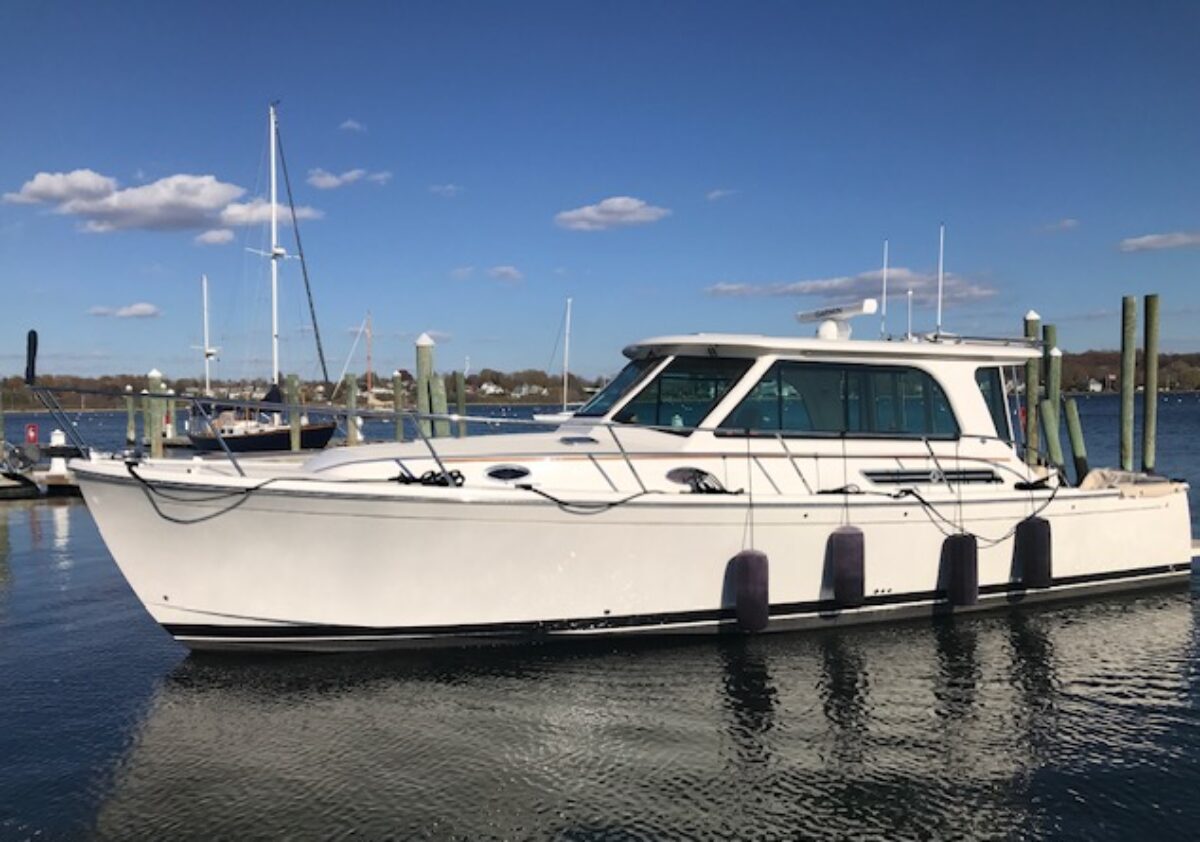We are currently hauled at Bristol Marine in Somerset MA having a lightning protection, or more accurately, a lightning survival system installed.
A little background here. In our sailing days we encountered lightning more often than I would like, usually when crossing the gulf stream. We were never hit although on one particularly unpleasant night we had multiple lightning strikes to the water within yards of our sailboat.
Getting hit by lighting on any boat while at sea could be disastrous. people can die and boats can sink from all the holes blown out at and below the waterline as the current passes through the boat and into the water. But the more likely result of a strike at sea would be the loss of all electronics. If that happened to me while on a sailboat I would be pretty confident I coud sail to the nearest port with no more than a hand-held compass and a paper chart. But the key word here is “sail”, meaning I could keep moving in the general direction of land.
For me, the biggest impact of moving from sail to power is the dependence on the continuous operation of multiple boat systems; electronically controlled propulsion, electric throttle controls, electrically managed hydraulic stabilizers, etc. If we were to receive a lightning strike at sea it could be rather devastating. No “sailing” to the nearest port, just bobbing around at the mercy of the sea until rescued. By who?
When we brought the boat up from Florida last spring we stayed in the gulf stream for four days. And that is just asking to be hit by lightning! As it turned out, we only encountered one active convective storm and we were able to avoid it. But I know from my sailing days that is not always possible. Once clear of the storm I got to asking myself just what we would do if we did get a strike that knocked out most of our systems. I realized that we were not prepared for this. So we had a few choices; stay inland, continue our offshore runs and take our chances, or find some way to better prepare and protect the boat in case of a lightning strike at sea.
We chose option three and have made two significant changes to the boat. First, we added a sea anchor to our suite of safety gear. If we were to loose engine power we can now at least keep the boat to weather until help arrives. And we are adding a lightning protection system.
My research into the subject of lightning protection for boats identified a few things. One, protection systems are as much art as science, and two, the currently recommended systems consisting of a lightning rod on the mast and grounding cables to a below waterline plate, don’t provide the sort of protection for on-board electronics that I was looking for. Most lightning strikes, understandably, happen in marinas. And it is beneficial to try and reduce the amount of damage caused by such strikes. Basic lightning protection systems probably accomplish this. But my goal is not to reduce the cost of repairs after a strike in a marina, I have insurance for that. I am looking for a system that will accept a strike at sea and give my a chance of continuing to run.
Protecting a sailboat versus a power boat provides some different challenges. Sailboats are natural lightning rods. They are also natural Faraday cages if all the standing rigging is tied into a grounding system. This can at least provide a level of protection for the occupants, if not for the electrical systems. Our trawler has a short mast, but from a lightning’s-eye view, our entire boat is one big path to ground. We have at least 12 antennas outside the hull, any of which is fair game. A lightning survival system for us keeps the voltage spike near the outer hull and provides multiple low-impedance routes to sea.
We are working with Dr. Ewen Thomson of Marine Lightning Protection, Inc. He is providing the overall design approach and advising on the details as I incorporate the design goals within the confines of an already built boat. I don’t think there is anyone who knows as much about marine lightning protection as Ewen so it has been fun to work with him. More on all this in the future
This is one of the early sketches we worked from. The design we are installing has evolved from this.

As the project progresses I will go into more detail on the design and installation process. Meanwhile, I need to get back to stringing wire in very small spaces.

Greg I read all your posts. On this one, my Catalina 42 back stay goes to my sugar scoop stern with in 12 inches of the water. I have been thinking of get a 2 foot piece of chain and a snap shackle to complete the path for lightning. Do you think that will do it?